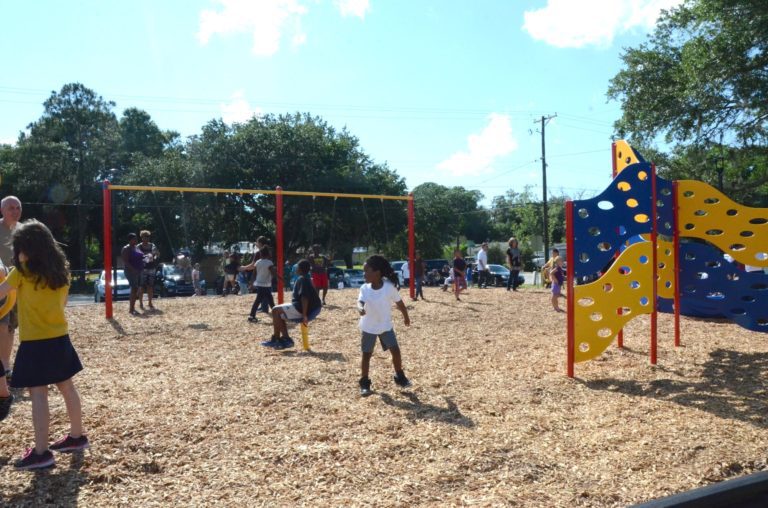
The City of Plant City wants residents to enjoy local parks and amenities now as much as ever.
City commissioners issued a proclamation on June 22 designating this month as Parks and Recreation Month, which is in lockstep with national celebrations that typically honor parks and recreation departments nationwide during July.
“In observing Parks and Recreation Month, we recognize the vital contributions of employees and volunteers in recreation and parks facilities,” the proclamation read. “These dedicated supporters organize youth activities, provide educational programming, advocate for more open space and better trails and raise funds for local improvements, and ensure that recreation and parks facilities are safe and accessible places for all citizens to enjoy.”
The city’s Parks and Recreation Department is promoting the month-long celebrating with information from the National Recreation & Parks Association:
Public support of parks and recreation:
- According to the National Recreation and Park Association’s 2019 Engagement with Parks Report, an overwhelming majority of Americans assert that they personally benefit from local parks and that their communities benefit from local parks.
- Americans, on average, visit their local park and recreation facilities more than twice a month.
- Three in four Americans live within a 10-minute walk of a local park or other recreational facility.
- Eighty-three percent of U.S. adults agree that visiting their local parks, trails and open spaces is essential for their mental and physical well-being during the COVID-19 pandemic.
- More than nine in 10 Americans agree that parks and recreation is an important local government service.
- Support for local parks is widespread, spanning different age groups, income strata, household types and political affiliations.
Health and wellness benefits of parks and recreation:
- The Centers for Disease Control found that increased access to places for physical activity led to a 25.6 percent increase in people exercising 3 or more times per week.
- Living close to parks and other recreation facilities is consistently related to higher physical activity levels for both adults and youth.
- On average, children who live in greener environments weigh less than children who live in less green areas.
- Children that have easy access to a playground are approximately five times more likely to have a healthy weight than children that do not have easy access to playgrounds.
- The nation’s park and recreation professionals are on the frontline in the battle against the COVID-19 pandemic, homelessness, substance use disorder, the obesity epidemic and other chronic health issues.
Environmental benefits of parks and recreation:
- A park with one acre of trees absorbs the carbon dioxide produced by driving a car 11,000 miles.
- Parks do a great deal to contribute to species richness in urban settings — a review of more than 60 studies by IFPRA shows that there is strong evidence to support the concept that parks support both plant and animal biodiversity. This offers not only an important educational opportunity, but additionally supports overall ecosystem functionality.
- Parks reduce the impact of large storms and flooding by serving as sponges that soak up run off from nearby paved surfaces during rain events. This in turn prevents flooding and decreases property damage. Parks that are well-designed also reduce water usage by recycling and storing this water for use during times of low precipitation.
- Evidence not only shows that parks are cooler than their surrounding cities, but actually shows that parks contribute to overall urban cooling — parks make our cities more comfortable in the summer!
- According to a 2017 NRPA Park Pulse poll, 83% of Americans believe it is important that their local government makes environmental initiatives a priority.
Economic benefits of parks and recreation:
- According to a study conducted by the Center for Regional Analysis at George Mason University and the National Recreation and Park Association, America’s local park agencies generated more than $166 billion in economic activity and supported more than 1 million jobs from their operations and capital spending alone in 2017.
Essential need for parks:
- 83 percent of U.S. adults agree that visiting their local parks, trails and open spaces is essential for their mental and physical well-being during the COVID-19 pandemic.
- Nearly three in five adults say that access to these amenities is very or extremely essential to their mental and physical health.
- Parents are more likely than nonparents to find parks, trails and open spaces very or extremely essential (68 percent vs 56 percent, respectively).
- Millennials and Gen Z are more likely than Baby Boomers to say it is very or extremely essential to do physical activities at their local parks, trails and open spaces to maintain their mental and physical health (68 percent and 65 percent vs. 54 percent, respectively).
“Parks and Recreation Month serves to recognize the importance of our park system and recreation opportunities,” department director Jack Holland said in a press release. “The services that park and recreation professionals provide are vital for our communities — from protecting open space and natural resources, to helping fight obesity and providing activities and resources for all people. This has been especially true throughout the COVID-19 pandemic. Parks and Recreation Month encourages everyone to reflect on the exponential value park and recreation professionals bring to communities.”
